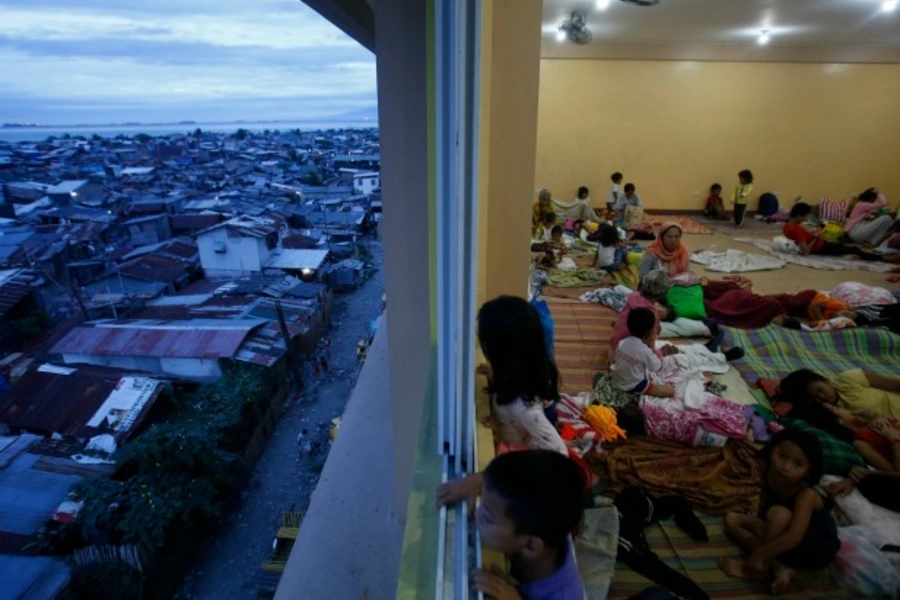More on:
As of Sunday night on the U.S. East Coast, Typhoon Hagupit had made landfall in the Philippines and moved across parts of the country. The typhoon had weakened and appears to not pack the force of Typhoon Haiyan, which devastated parts of the Philippines last year. Still, Hagupit already has caused significant damage. Casualty and damage figures remain incomplete, but initial estimates suggest that at least 20 people have been killed and thousands of homes have been destroyed by Typhoon Hagupit, with the damage yet to be tolled from the storm’s movement over Metro Manila. Typhoon Hagupit also may have set back some of the reconstruction that has taken place in areas hit by Haiyan last year.
Hagupit is a tragedy, but compared to last year’s Typhoon Haiyan, which killed over 6,000 people, this time the Philippine government has prepared more effectively. These preparations are likely to reduce the total amount of damage caused by this typhoon, though of course there is only so much Manila can do in the face of a natural disaster, and global climate change appears to be increasing the fury of the storms that regularly lash the Philippines.
Still, whereas last year Manila waited until the last minute to push for evacuations, with Hagupit the government issued evacuation orders well in advance, giving people time to leave their homes. Nearly one million people were evacuated from possible danger zones in advance of the storm, a decision that almost surely has helped keep the casualty count low. The Aquino government made significant preparations for protecting the parts of Metro Manila most vulnerable to flooding, stacking up sandbags and other protective devices, canceling all major public events so that people stay home, and mapping out a plan, in advance, for clearing roads and airports in the capital and other parts of the country.
In addition, the Aquino government readily accepted assistance, in advance of Hagupit, from the United States, Japan, and other countries in tracking the storm’s progress, helping with the evacuation process, and putting humanitarian aid stations in place before the storm hit. The national government and local governments also assembled search-and-rescue teams in advance of this storm, so that after the storm hit, the rescue teams would immediately be able to move into action to help survivors and treat the wounded. With Haiyan, by contrast, the Aquino government was dangerously blasé about setting up aid stations before the storm or working with other governments to prepare. After Haiyan, survivors often were left without food or water.
Given that the Philippines is, according to the Global Climate Risk Index, one of the countries in the world most affected by extreme weather events, this kind of preparation will, sadly, have to become the norm in Manila.
More on:
 Online Store
Online Store
